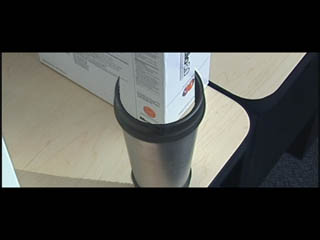
The Video Pipeline
Step 1 |
Shoot a clean (background) plate without the object inserted |
Step 2 |
Without moving the camera, insert the object(s) that are going to
be rendered into the scene. This will be the foreground plate. |
Step 3 |
Gather/Determine the depth information for the scene...there were two ways originally conceived to do this:
Stereo Cameras : Pros/Cons
Creating 3D Models : Pros/Cons
Conclusion: These sets of difficulties meant that the stereo camera
option was out of the question and doing 3D modelling would be the solution,
but a very difficult one. Then a third solution (not very technical, but
convenient, fast, and with "good enough" results was proposed by my friend
Arno Schoedl; Using a
paint or image program and synthesizing the depth information with gradients.
It would be fairly fast (each object usually took less than 2 hours to create
a decent depth map), as accurate as the amount of time I was willing to
spend, and I could create some interesting ("cool") renders by creating
depth information that isn't accurate. (Best of all, I made the
SIGGRAPH ET deadline, although I didn't get in) |
Step 4 |
Take the clean (background) plate, the foreground plate, and the depth information map and feed them into the renderer. The area to render, the number of frames to draw in the object, the Z-depth (thickness) of the slices to use, and the height of the scan lines can all be specified in the renderer. With this data, the renderer will spit out the video sequence |
[ Return to the Schrodinger page ]